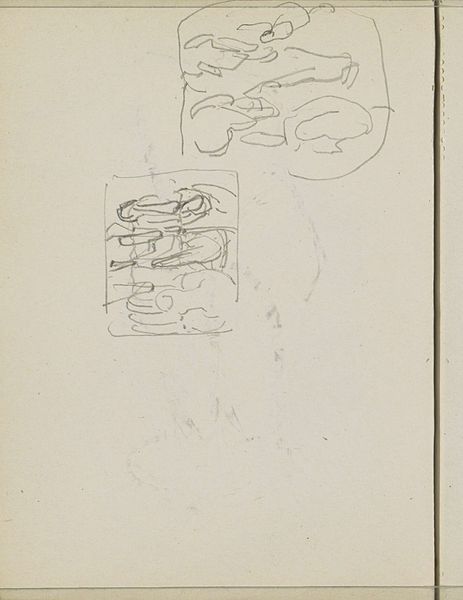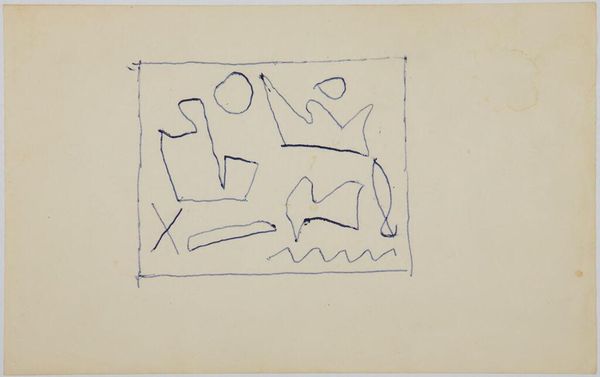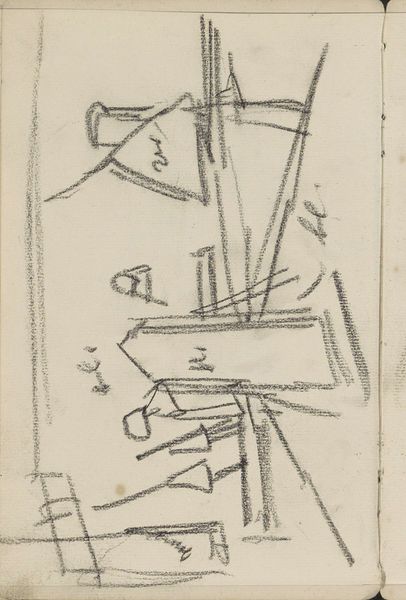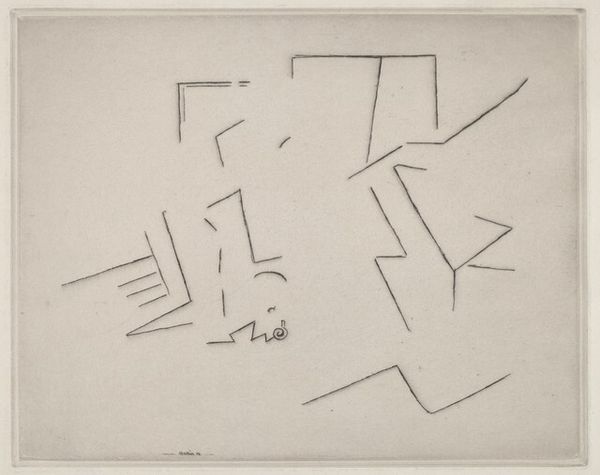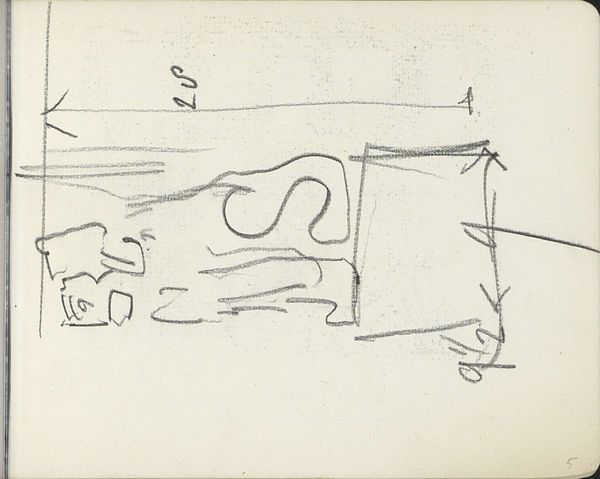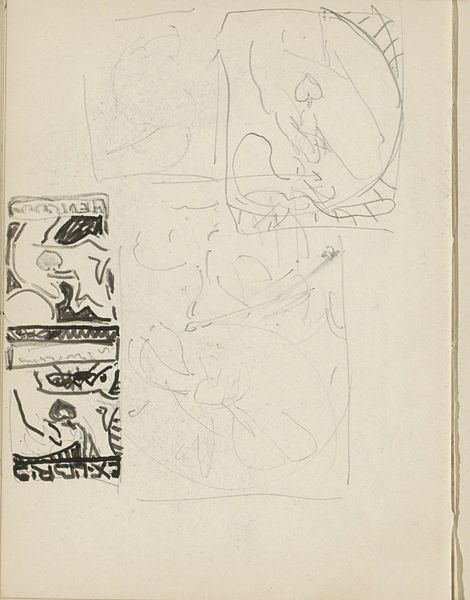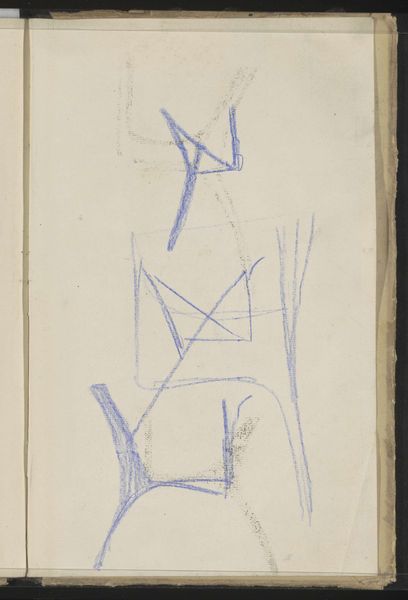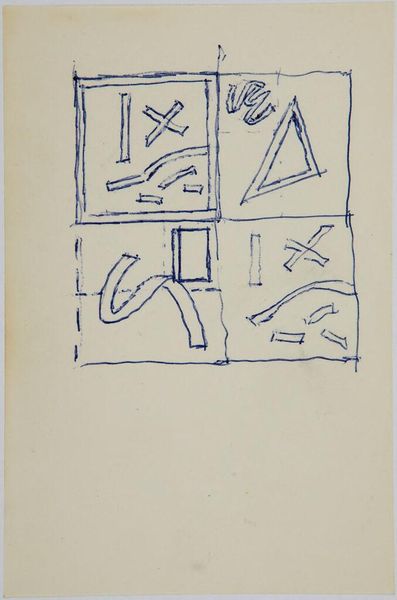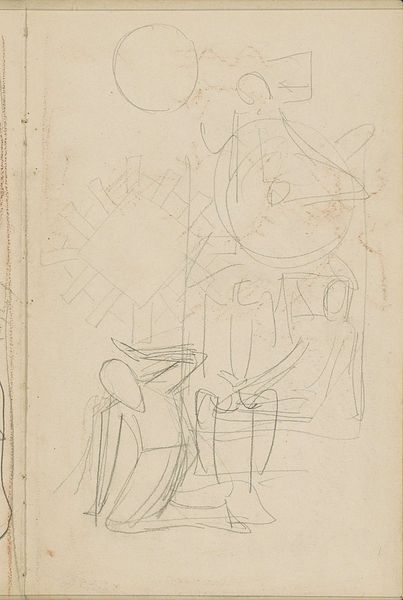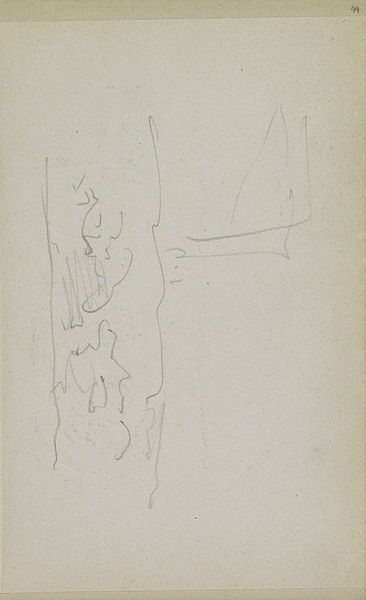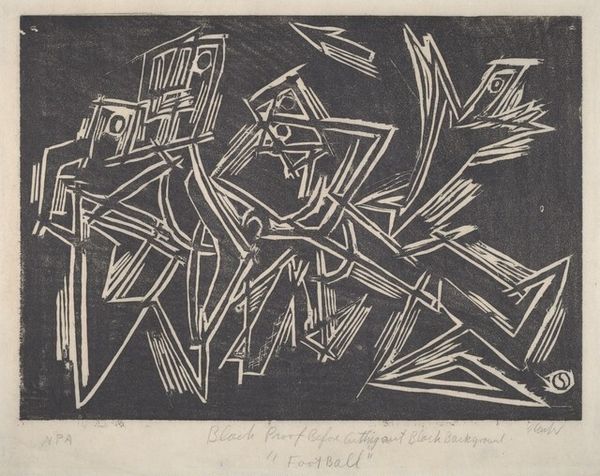
drawing, paper, pencil
#
drawing
#
aged paper
#
toned paper
#
ink paper printed
#
old engraving style
#
hand drawn type
#
paper
#
personal sketchbook
#
idea generation sketch
#
ink drawing experimentation
#
geometric
#
pencil
#
abstraction
#
sketchbook drawing
#
sketchbook art
Copyright: Rijks Museum: Open Domain
Curator: This intriguing sketch is titled "Drie figuren," or "Three Figures," by Johan Antonie de Jonge, dated between 1884 and 1927. It's rendered in pencil and ink on paper. Editor: My initial impression is one of geometric instability, a delicate balance on aged paper. The figures, if that's what they are, appear to be fragmenting before our eyes. Curator: The fragmentation you perceive is fascinating. De Jonge seems to be exploring the basic building blocks of form itself. Notice how he uses rudimentary shapes - squares, triangles, lines - almost as a child might, yet with an undeniable artistic intent. We see a lot of drawings that were intended as an idea generation sketch inside of a personal sketchbook. Editor: Precisely. The materiality of the paper adds another layer, that the toning suggests a removal from the time, and adds meaning in context to the time that the shapes are coming from. The tonal contrast is quite restrained, focusing attention on the outlines. The surrounding squares act as visual anchors, containing the central dynamism. The hatch marks, while perhaps rudimentary, add a textural counterpoint. Curator: Let's consider De Jonge's socio-cultural context. The period from 1884 to 1927 witnessed the rise of abstraction, with artists grappling with representing a rapidly changing world. I argue that it's about something different. Editor: How so? Curator: Instead, his focus seems purely formal, a playful exercise in line and form that transcends specific historical concerns. The question here seems less about representing reality than about constructing an alternative one. De Jonge may want viewers to wonder about new ways to interpret shapes and objects. Editor: So, for you, it’s the intrinsic elements prevailing over exterior considerations? I concede, the piece compels us to appreciate how art can be about the very essence of seeing, thinking about all possibilities. Curator: I appreciate how, by contemplating the socio-cultural context, it changes a basic, intrinsic geometric experience to something more in how that relationship may influence our observation. Editor: And I how looking at shape and geometric placement and context with a theoretical engagement in hand gives a new look on personal work with pencil and paper. A fine, albeit abbreviated, discourse!
Comments
No comments
Be the first to comment and join the conversation on the ultimate creative platform.
